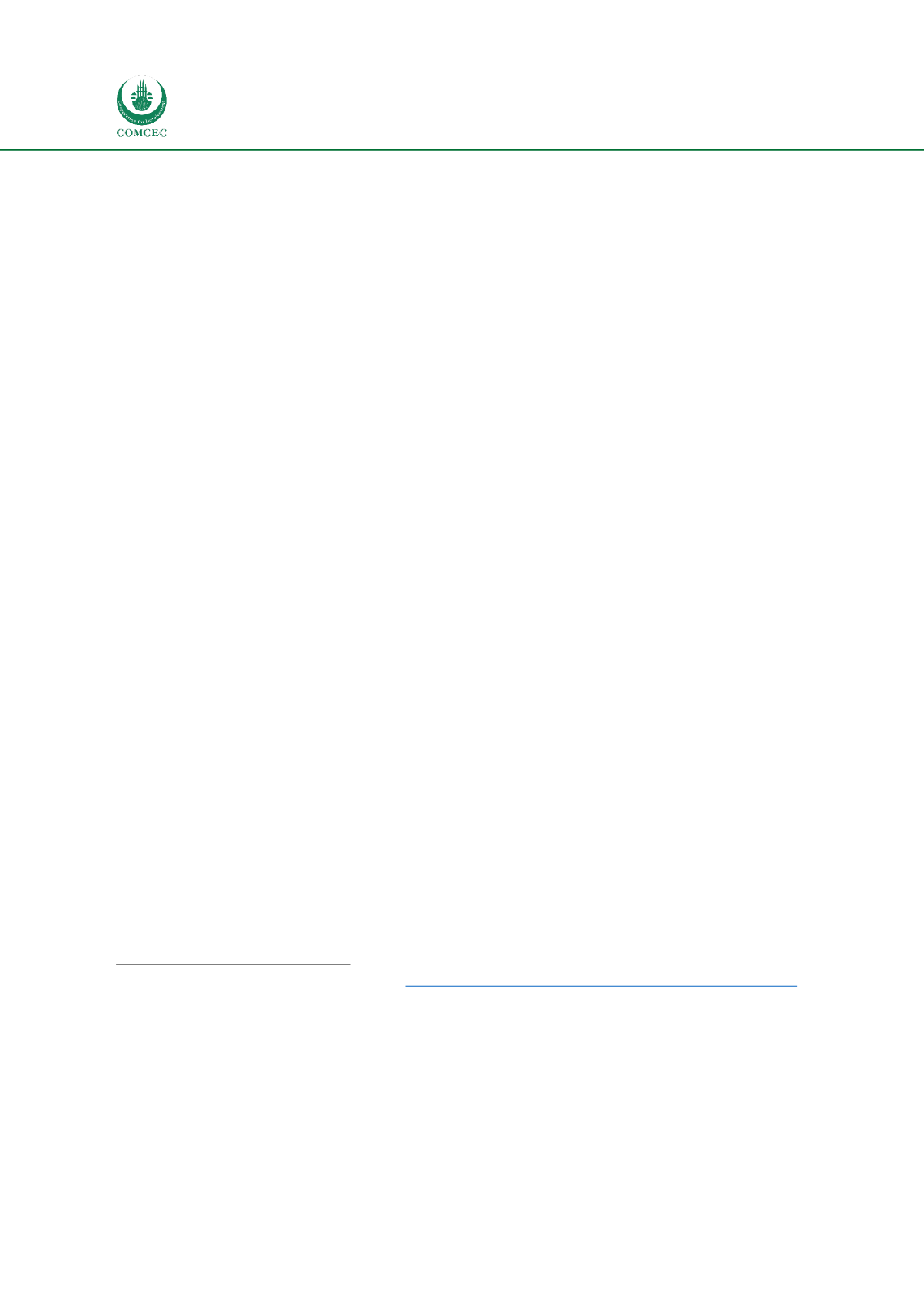

Improving Agricultural Market Performance
:
Creation and Development of Market Institutions
62
At the same time, the 2015 FAO figures on food insecurity may understate the gravity of the
current situation, especially in sub-Saharan Africa, where certain regions of any country may
be at far greater risk than national statistics might indicate. According to a recent report these
countries include Djibouti, where severe drought now threatens more than one-fourth of the
population with food insecurity; Mozambique, where a cyclone in April 2017 destroyed more
than 27,000 hectares of crops in the Inhambane Province and placed more than a half million
people in the region at heightened risk of food insecurity; and Uganda, where two consecutive
years of poor rains have placed nearly 400,000 additional people at risk, especially in northern
and northeastern areas of the country.
111
Given the disparity in economic conditions and food security among the different OIC Member
Countries, as well as a difference in outcomes between countries with similar economic,
climatic, and political/security conditions, it is worth exploring how and to what extent
agricultural market institutions may play a positive or negative role in improving or worsening
food security.
Many countries, including some of the poorest countries in sub-Saharan Africa, have
liberalized their economies and have sought to harness market mechanisms and institutions,
especially in the rural and agricultural sector, to reduce poverty. The results, however, have
been mixed. Although in some countries and agriculture subsectors large commercial
agribusiness concerns have organized smallholders into successful out-grower schemes, a
large percentage of smallholder farmers continue to engage in semi-subsistence agriculture
and cannot benefit from liberalized markets. The challenges of improving conditions for
smallholders have been compounded by poor infrastructure and weak institutions.
112
In the poorer OIC Member Countries, (largely though not exclusively in Africa), the market
suffers from several endogenous risks including high transaction costs, high risks, missing
markets and lack of social capital or collective action.
113
In these countries, the incomplete and
non-strategic implementation of market interventions has resulted in only partial success.
Additionally, the resulting instability has meant that the private sector has been reluctant to
step in and address any resulting shortcomings.
114
In short, the challenges of price volatility, seasonal or cyclical fluctuations in prices or supply,
exploitation and oligopoly, farmer income and risk exposure (rural poverty alleviation),
industrial development, and generally providing food for increasing populations of urban
consumers remain.
111
IRIN (2017), Drought in Africa 2017, available a
t https://www.irinnews.org/feature/2017/03/17/drought-africa-2017[accessed May 2017].
112
Shiferaw, B. & Muricho, G. (2011), “Farmer organizations and collective action institutions for improving market access
and technology adoption in subSaharan Africa: Review of experiences and implications for policy,” in ILRI (eds.),
Towards
Priority Actions for Market Development for African Farmers
, pp. 293-313, Addis Ababa: International Livestock Research
Institute.
113
Mangisoni, J. (2006), “Markets, Institutions and Agricultural Performance in Africa,”
ATPS Special Paper Series
, No. 27, pp.
2-7.
114
Shiferaw, B. & Muricho, G. (2011), “Farmer organizations and collective action institutions for improving market access
and technology adoption in subSaharan Africa: Review of experiences and implications for policy,” in ILRI (eds.),
Towards
Priority Actions for Market Development for African Farmers
, pp. 293-313, Addis Ababa: International Livestock Research
Institute.


















